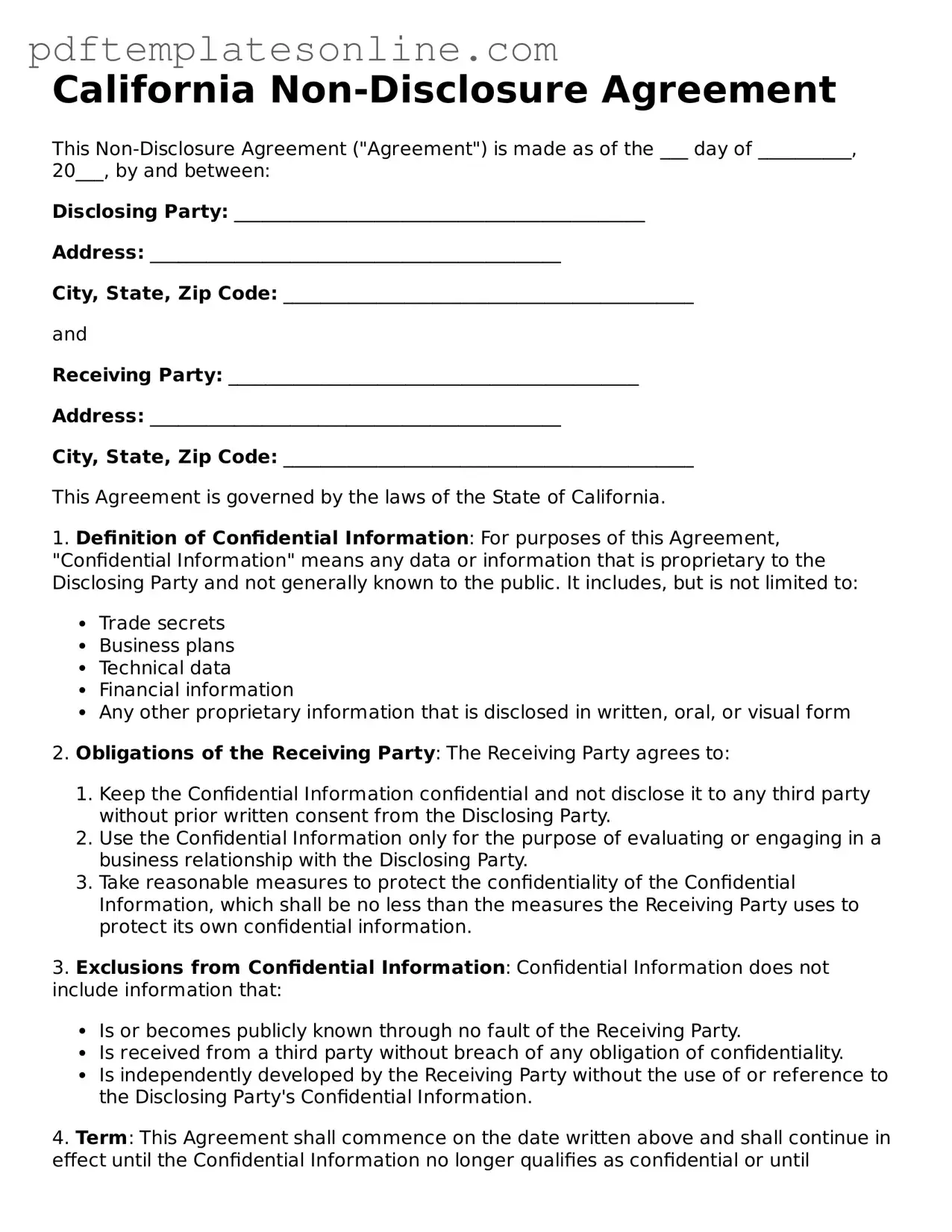Filling out a California Non-disclosure Agreement (NDA) can be a straightforward process, but many individuals make common mistakes that can lead to complications later on. One frequent error is failing to clearly define the confidential information. Without a precise definition, it may be difficult to enforce the NDA if a dispute arises. It’s crucial to specify what constitutes confidential information, whether it’s trade secrets, business plans, or client lists.
Another mistake is neglecting to identify the parties involved. An NDA should clearly state who is bound by the agreement. This includes not just the individuals or companies signing the document, but also any affiliates or subsidiaries that may be privy to the confidential information. Omitting this detail can lead to confusion about who is responsible for maintaining confidentiality.
Many people also overlook the duration of the confidentiality obligation. The NDA should specify how long the information must remain confidential. If this period is not clearly defined, it may lead to misunderstandings about when the obligation ends. Generally, a reasonable time frame should be established, considering the nature of the information.
Another common error involves the lack of consideration for exclusions from confidentiality. Not all information is confidential. For example, if information is already publicly available or independently developed, it should be excluded from the NDA. Failing to include these exclusions can create unnecessary restrictions and complications.
In some cases, individuals forget to include consequences for breaches of the NDA. It’s essential to outline what will happen if one party discloses confidential information without authorization. This could include legal remedies, financial penalties, or other actions. Clearly stating these consequences can deter potential breaches.
People also often make the mistake of not having the NDA reviewed by a legal professional. While it may seem unnecessary, a legal expert can provide valuable insights and ensure that the document complies with California law. Skipping this step can lead to enforceability issues down the line.
Another mistake is using overly complex language. An NDA should be clear and understandable. If the language is too technical or convoluted, it can lead to confusion about the obligations of the parties involved. Keeping the language simple helps ensure that all parties fully understand their responsibilities.
Lastly, individuals sometimes forget to sign and date the NDA properly. An unsigned or undated document may not hold up in court. It’s important to ensure that all parties have signed and that the date is clearly indicated. This simple step can save a lot of trouble in the future.
